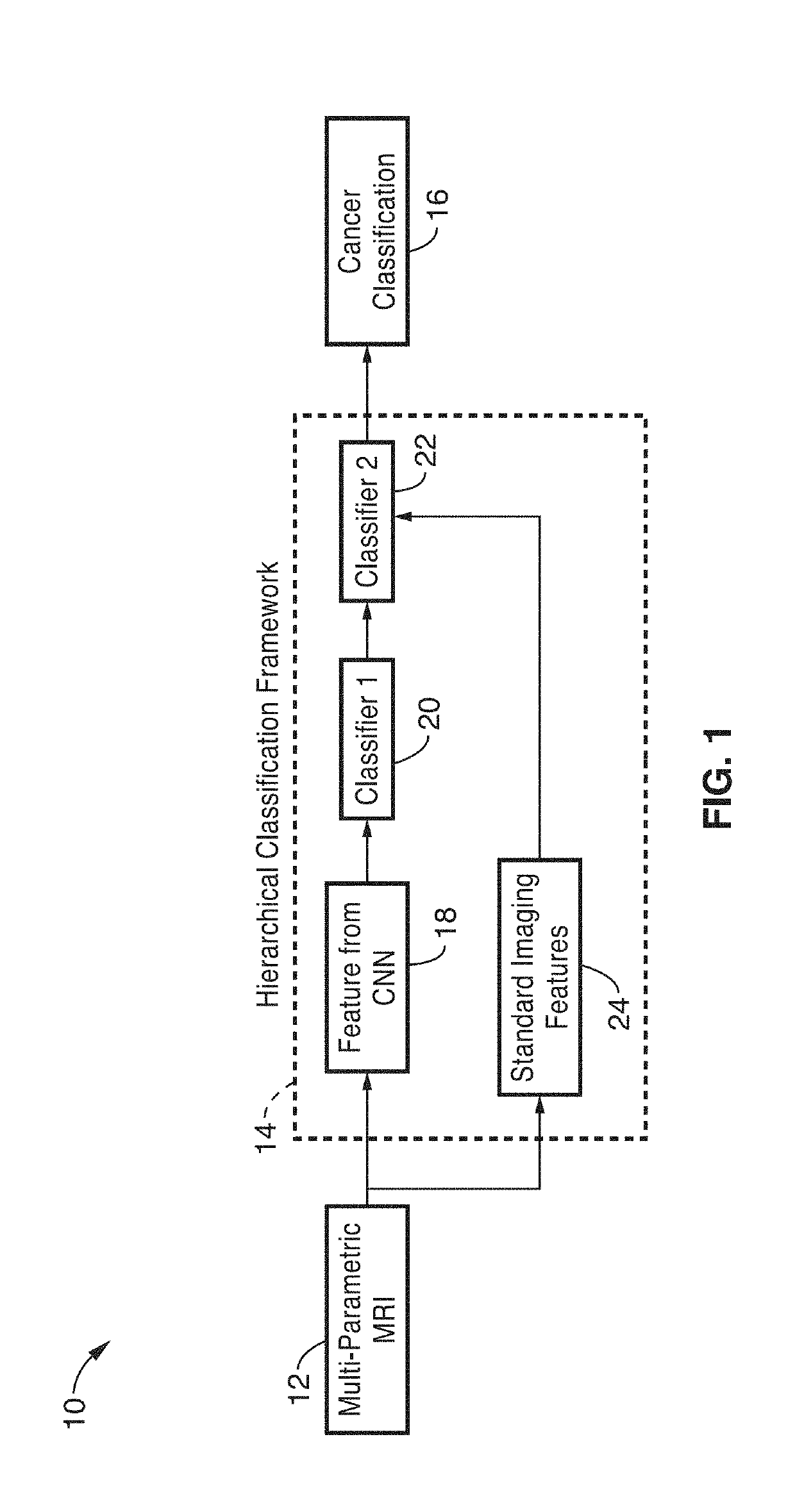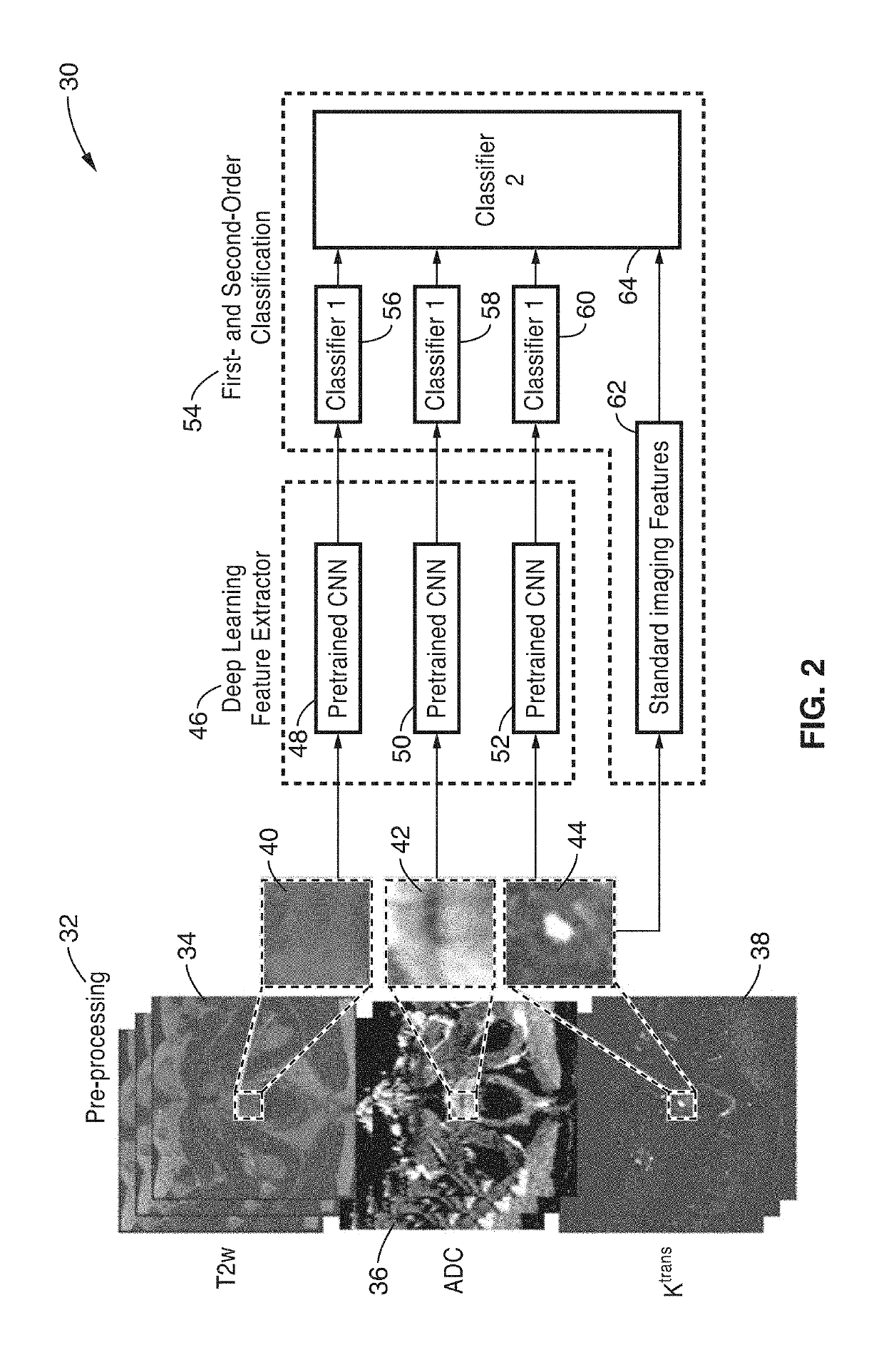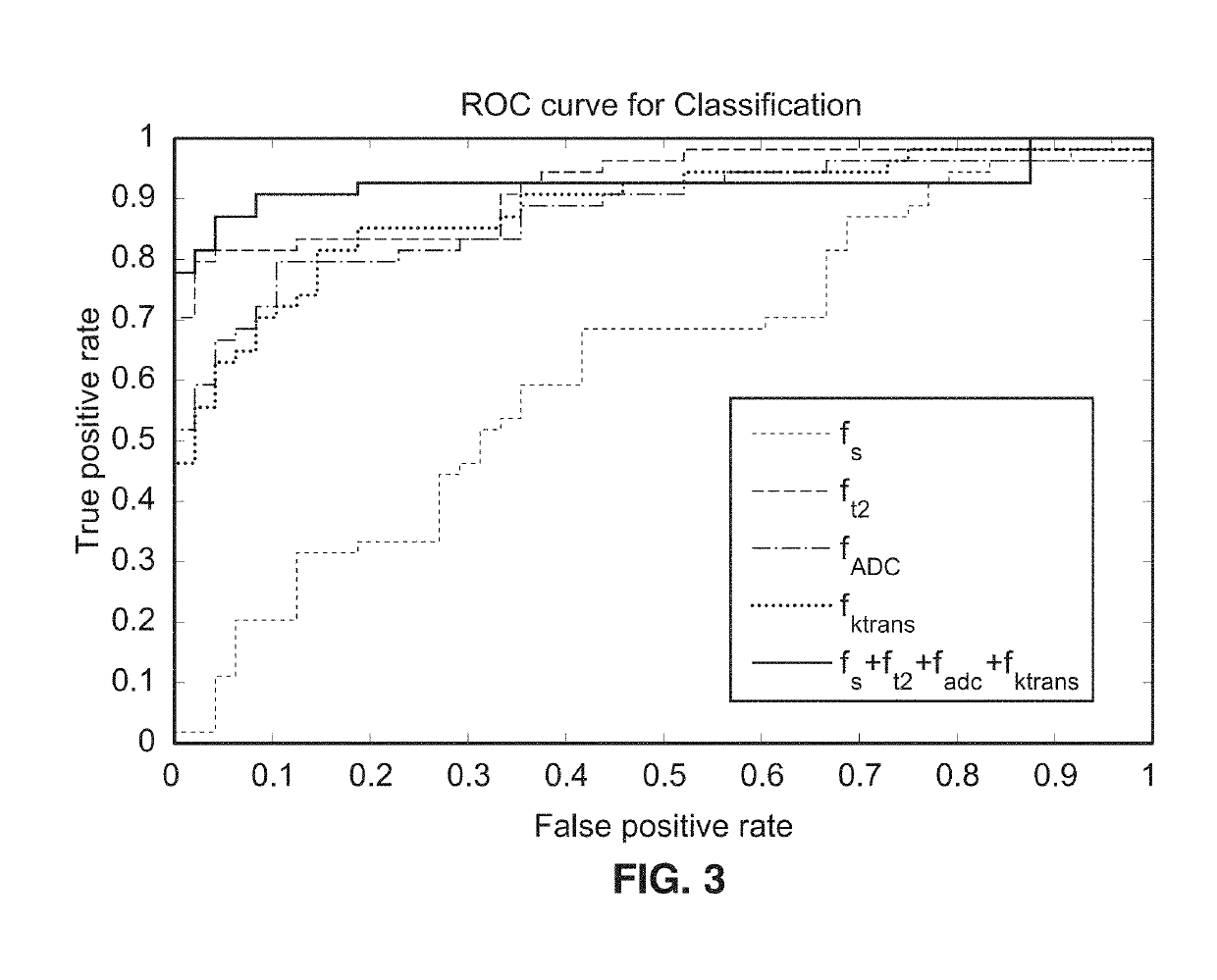Deep-learning-based cancer classification using a hierarchical classification framework
a hierarchical classification and deep learning technology, applied in the field of deep learning based magnetic resonance imaging methods, can solve the problems of high false positive rate, and difficult task of accurate cancer classification, and achieve the effect of reducing learning requirements
- Summary
- Abstract
- Description
- Claims
- Application Information
AI Technical Summary
Benefits of technology
Problems solved by technology
Method used
Image
Examples
example 1
[0043]In order to demonstrate the operational principles of the apparatus and imaging and classification methods 30, a dataset of mp-MRI images were recorded for a total of 68 patients and processed using the processing steps shown generally in FIG. 1 and FIG. 2. A study cohort of 68 consecutive men who underwent 3.0T mp-MRI (Skyra and Trio, Siemens Healthcare) prostate imaging prior to radical prostatectomy was acquired. Each mp-MRI study, including T2-weighted (T2w), DWI and DCE images, was correlated with whole mount histopathology by experienced GU pathologists, and lesions were matched with respect to location, size and Gleason Score (GS). Indolent PCa cases were defined as having a GS smaller than seven (GS≤6) and cancerous (CS) PCa ones were defined has having a GS that was larger or equal to seven (GS≥7). A total of 102 lesions were identified, including 48 indolent and 54 CS sub-cohorts.
[0044]As shown schematically in FIG. 2, the acquired images were initially preprocessed ...
example 2
[0048]To demonstrate the effectiveness of the system, the four classification models were built and compared. Specifically, four different SVMs were built using only fs, fT2, fADC or fK, respectively. The performance of these models was also evaluated with a five-fold cross validation using the whole dataset. The results were measured using the mean areas under curve, mean accuracy, mean sensitivity and mean specificity as shown in Table 1.
[0049]FIG. 3 is a graph depicting the receiver operating characteristic
[0050](ROC) curves for the four models in this example. The model of the system (fs+fT2+fADC+fK) shown in a solid line in FIG. 3 achieved the highest performance compared to the other models. It can be seen from FIG. 3 and Table 1 that the standard model using six statistical features (fs) achieved the lowest performance mainly due to lack of accurate lesion contours and anatomical-location-specific training. The results also suggest that deep features significantly contribute ...
PUM
 Login to View More
Login to View More Abstract
Description
Claims
Application Information
 Login to View More
Login to View More - R&D
- Intellectual Property
- Life Sciences
- Materials
- Tech Scout
- Unparalleled Data Quality
- Higher Quality Content
- 60% Fewer Hallucinations
Browse by: Latest US Patents, China's latest patents, Technical Efficacy Thesaurus, Application Domain, Technology Topic, Popular Technical Reports.
© 2025 PatSnap. All rights reserved.Legal|Privacy policy|Modern Slavery Act Transparency Statement|Sitemap|About US| Contact US: help@patsnap.com



